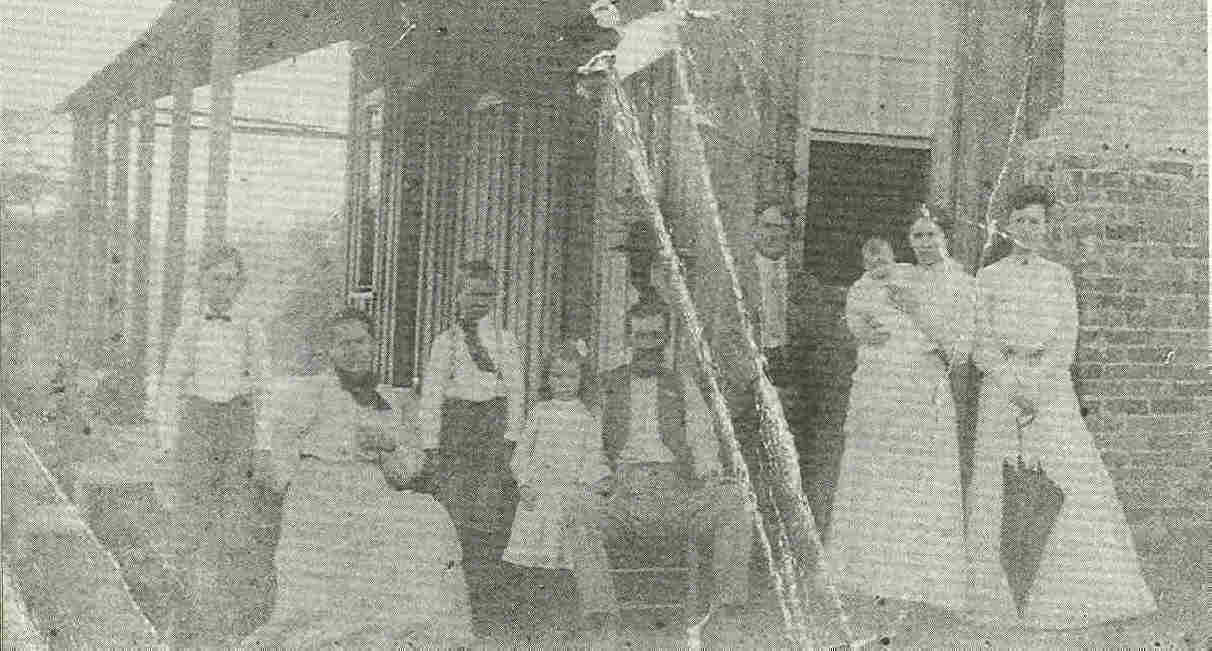
Thomas McKinney, with family
This photo was taken at an unknown time, possibly close to the turn of the century.
Thomas Christopher "Kip" McKinney was born Mar. 19, 1856 in Tarrant County, Texas. In the mid to late 1870s, Kip and his father drove a herd of cattle from Palo Duro, Texas to Seven Rivers, New Mexico. There, Kip hooked up with the rustling gang known as the Seven Rivers Warriors, but apparently left the gang and returned to Texas before the Lincoln County War erupted. In the late 1870s or early 1880s, he became a Texas Ranger, as well as a deputy U. S. marshal. With this authority, he tracked rustlers throughout Texas, New Mexico, and Arizona. In the spring of 1881, Sheriff Pat Garrett of Lincoln County, NM, appointed Kip a deputy as well. Later, he traveled to Arizona on the trail of horse thief Buck Edwards, who was a former member of Billy the Kid's gang of outlaws. Accompanied by a posse, Kip tracked Edwards back to the outlaw's dugout at Rattlesnake Springs, New Mexico on May 8, 1881. A gunfight erupted, with Kip killing Edwards. Kip then traveled to Roswell, where in mid-July, he was picked up by Garrett and fellow deputy, John Poe. The three men rode to Fort Sumner, for the purpose of investigating rumors of Billy the Kid's presence. On July 14, Garrett allegedly shot and killed the Kid in a friend's bedroom. While Garrett and Poe later recited their versions of the night's events, Kip preferred to not discuss it. He did allegedly tell three different versions though, to a friend and family members. The first was that he, Garrett, and McKinney tied up Billy's girlfriend to bait Billy, then Garrett shot him from ambush. The second was that Kip himself shot someone, only that it was the wrong man. The final was that Garrett killed the wrong man on the porch of Pete Maxwell's house, and that the real Kid escaped. On July 24, 1882, Kip married Letitia T. Smith and was soon after hired by the U. S. Army to serve as a scout for wagon trains. By 1891, he was working at Fort Huachuca and later served in the Spanish-American War as a guide. Later still, he drifted along the southwest as a miner. He died of lung cancer on Sept. 20, 1915.